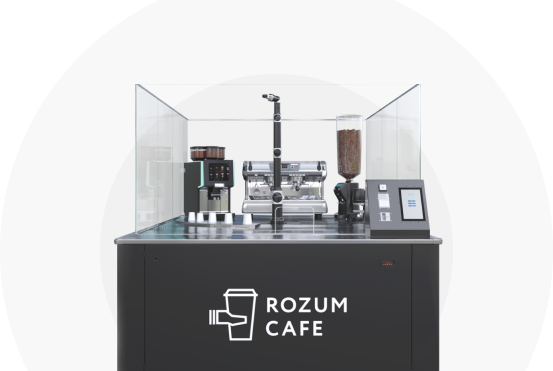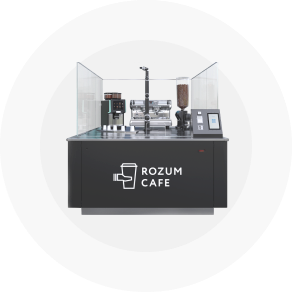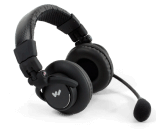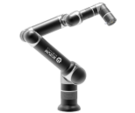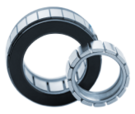The current market of motion solutions favors brushless motor manufacturers. The evidence is the statistics from recent research: the 2017 sales of the actuator type amounted to about 6 billion USD with expected growth at the rate of almost 11%. By 2026, the figure is projected to reach 14 billion USD.
Why brushless motors
Essential factors boosting the impressive market growth include wider utilization of the engines in industrial applications, including HVAC systems, robotics, and automotive engineering. The consumer electronics sector has also taken brushless actuators at their worth, praising the devices for high energy efficiency and ecological performance.
In countries, such as the USA, Japan, China, India, and Europe, brushless drives are spreading across chemical, paper and pulp, as well as food processing industries. What is the secret behind the increasing popularity among versatile manufacturers?
Brushless motors have a robust and reliable design, where mechanical commutation is substituted for semiconductor electronics. The two major components are as follows:
- a non-moving stator—a laminated stack with winding functioning as an electromagnet
- a movable rotor—a permanent magnet ring
Since the winding remains motionless, keeping it cool is easier. No moving electrical contacts are essential, which curbs associated risks.
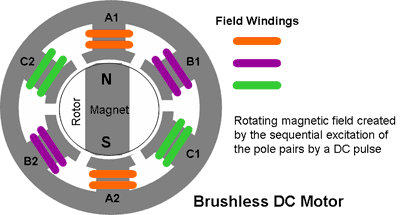
Through the working principle of a brushless mechanism is the same as in a brushed direct-current drive—based on rotor position feedback, the implementation is different. In the drive, manufacturers use neither brushes nor commutators, but need to combine the motion hub with a Hall sensor or an encoder to return the required data. This accounts for better precision of movements and controllability.
The actual gains
Both the construction and the operation particulars entail the following benefits:
- Remarkable efficiency with high torque output over an extensive velocity range, including holding a position
- Provides smooth propulsion and quick response to command input
- Demonstrates thermal resistance qualities, excluding sparkling risk
- Requires less maintenance, while boasting excellent durability
- Generate less noise when running
- Helps to reduce energy consumption
The major restricting factor is the need to use sensors with a brushless motor, which increases not only the manufacturer cost, but also installation complexity.
What features matter
Introducing modifications to the standard manufacturer’s design of brushless engines leads to variations in their characteristics and might affect performance of your application. So, mind the following.
Pole quantity
Typically, a rotor incorporates two to fifty or more magnet poles. Increasing their number enables obtaining more torque without intensifying current supply. However, the more poles a rotor has, the less space remains for each of them. Therefore, to calculate a proper quantity, take into consideration engine geometry and materials.
Stator lamination and winding
Improper choice of lamination and winding material can cause problems at the production stage, entailing increased design costs.
Augmented copper content in the winding enhances engine power, while cutting losses. Stator laminations have slotless or slotted configuration. Brushless solutions with a slotless design boast reduced inductance and low cogging torque, which allows them to run at both extra high and extra low speed.
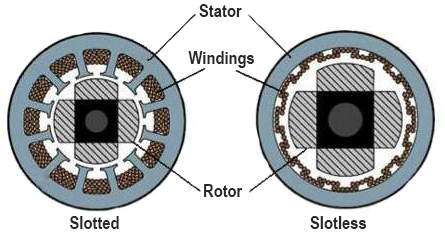
In general, the slotted configuration is deemed less efficient, but for the price consideration. Slotless models tend to be more expensive because of the additional winding required to close the expanded air gap.
Cylindrical or pancake shape
Cylindrical motors are built in a way that a stator is either on the outside of the rotor, in which case they are called inrunners, or on the inside—referred to as outrunners. In the actuators, the magnetic field flow is oriented radially across the gap between the rotor and the stator.
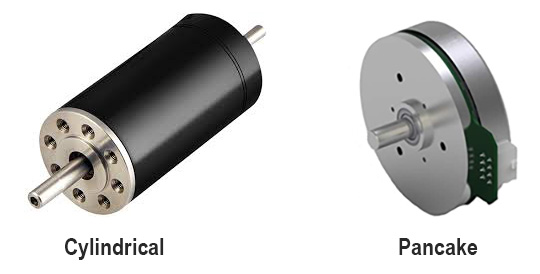
The pancake type mechanisms are also known as axial-flow drives, because the magnetic field moves in the axial direction. The specific shape translates into compact footprint. Combined with low inertia, the flat configuration enables faster acceleration and deceleration.
Linear or rotational
Depending on the mode of propulsion in an application—rectilinear shifts or angular positioning, users choose a rotary or a linear brushless drive accordingly. Whereas it is possible to convert straight-line moves into rotation and otherwise with a transmission, performance is always better when it is direct motion of either variety. Especially, when you need to minimize system backlash and inertia.
Phase count
Manufacturers produce brushless motors featuring one, two, or three phases. A single-phase drive comprises a single stator winding, whereas a mechanism labelled as three-phase incorporates three coils.
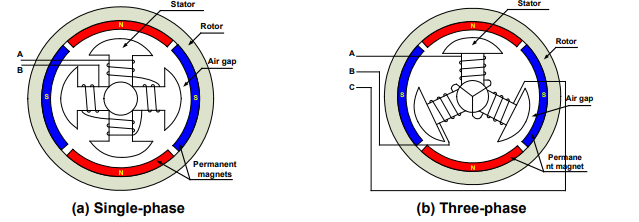
The most common types are the two- and three-phase engines, because they simplify regulating current supply to the winding.
Brushless motor manufacturers in a snapshot
Manufacturers from the Asia-Pacific region and North America take leading positions in the brushless drive marketplace. The next top producers come from Europe and South America. The expansion drivers in the Asia Pacific countries are the fast-growing demand for domestic appliances and access to low-cost labour and raw materials.
Actors of influence include Nidec Corporation from Japan, Johnson Electric from China, Allied Motion Technologies Inc. and Ametek from the USA. In Europe, front runners are Minebea (France) and Maxon Motor AG (Switzerland). Holding strong positions locally, the leading vendors are, nevertheless, aiming at conquering new markets in developing countries.
Rozum Robotics offer
The brushless technology employed in the FMI series has enabled us to deliver frameless motion solutions with a compact footprint, but packed with outstanding power. Using a know-how winding contributes to enhanced efficiency.
The products boast low weight, great manageability, and durability. With a hollow shaft, integrating an FMI brushless motor into an application is just a plug-and-run operation. Due to low cogging torque, the synchronous AC actuators enable equable angular displacement without jerkiness.
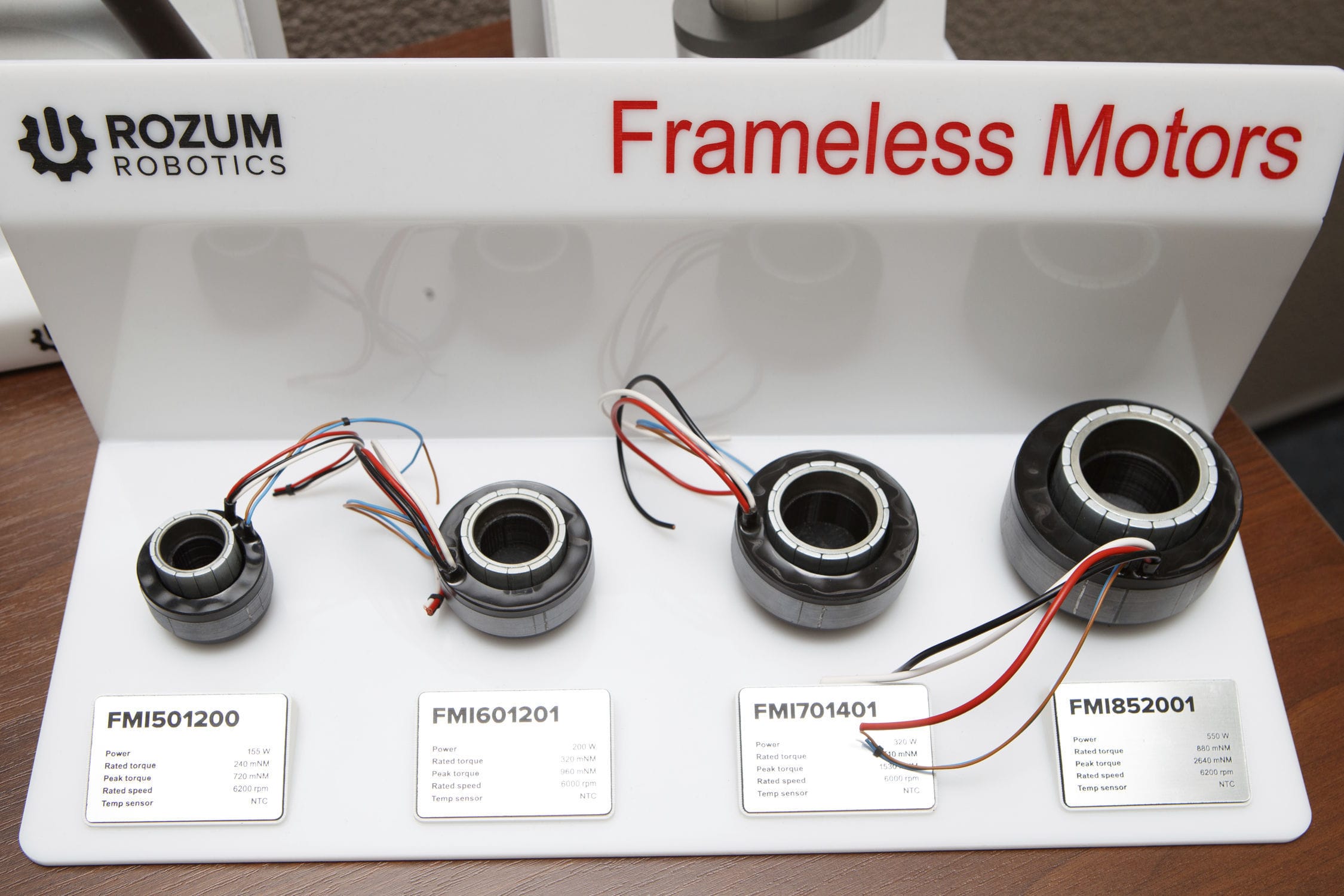
The entire delivery process—from design to the quality control stage—is under direct supervision of our specialists. As a reputable manufacturer, Rozum Robotics offers a 1-year warranty and guarantees continuous operation of its brushless engines for 35,000 hours minimum.
In addition, the company is willing to help its consumers to acquire an actuator fully customized to their specific demands. Embedding a Hall sensor, modifying the wiring or the housing, or adding a shaft—these are only a few of countless product personalization options.
